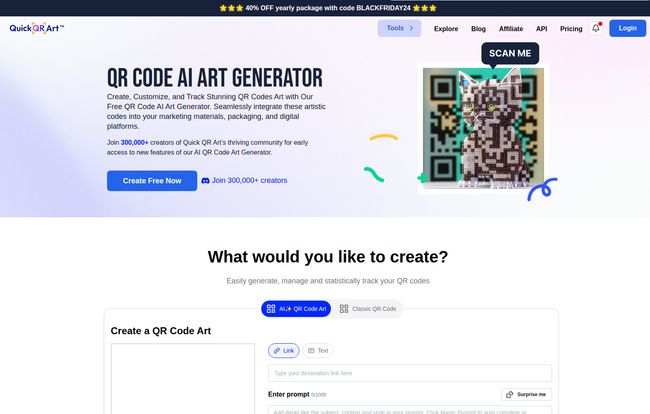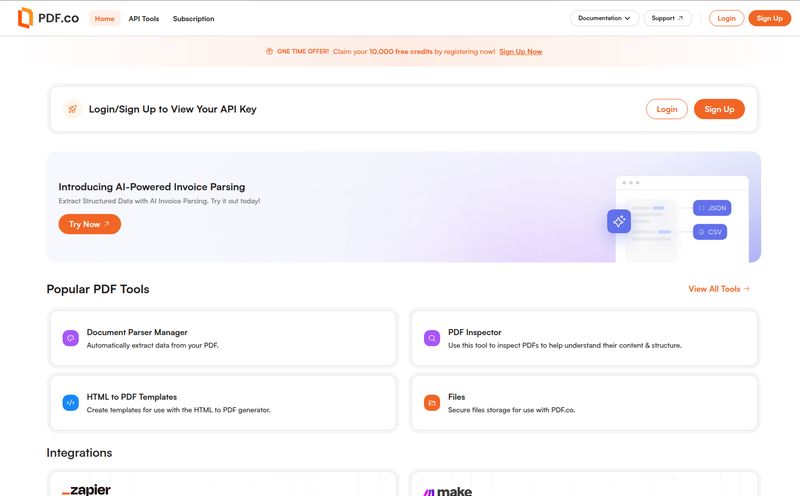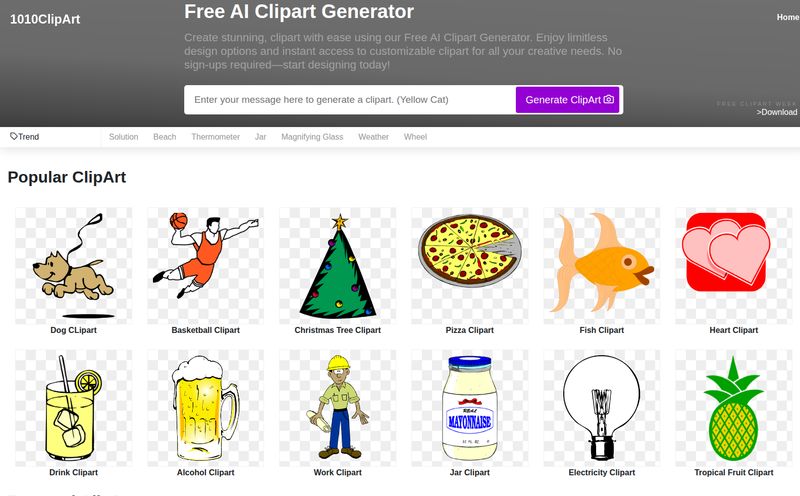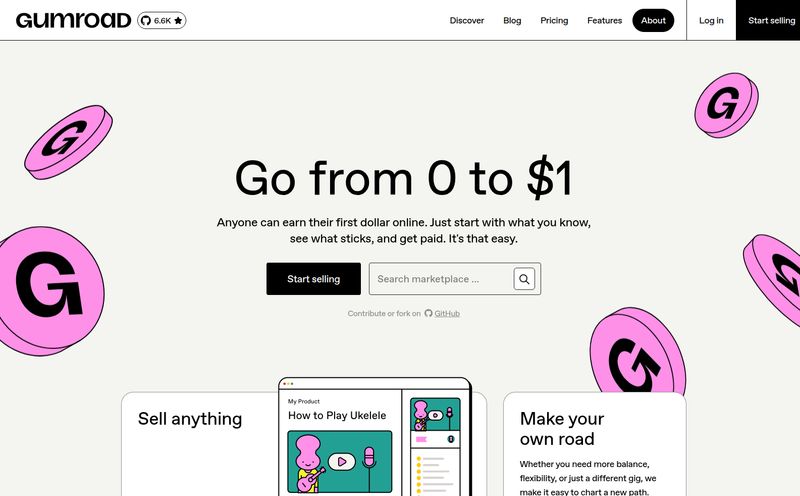For the longest time, QR codes were the nerdy, uncool cousin of the marketing world. We all used them, sure. Slapped them on flyers, menus, business cards... but did anyone ever love them? They were a functional black-and-white mess. A necessary evil to bridge the physical and digital worlds. It was a tool, not an experience.
I’ve spent years in the SEO and digital marketing trenches, and I’ve always seen QR codes as pure utility. A means to an end. Get the click, get the traffic, track the scan. Job done. But honestly, they were an eyesore on an otherwise beautiful design. A smudge on the Mona Lisa.
Then, the AI art explosion happened. And someone, somewhere, had the brilliant idea to smash these two worlds together. I’ve been watching this space closely, and a few platforms have popped up, but one that recently caught my eye is Quick QR Art. Their claim? To generate “beautiful and scannable AI QR Codes.” My first thought? Skepticism. My second? I absolutely have to try this.
So, What Exactly Is an AI QR Code?
Imagine your standard QR code. Now, instead of a jumble of pixels, picture a vibrant, detailed image. A dragon, a cityscape, a portrait, a plate of delicious-looking food... anything. The AI cleverly weaves the data points of the QR code into the artwork, so it remains perfectly scannable by a smartphone. It’s a bit of technical wizardry, like hiding a secret message inside a painting.
It’s no longer just a link; it’s a conversation starter. It’s a piece of branding. It’s... well, it’s just plain cool. And in marketing, “cool” can translate directly to engagement and conversions.

Visit Quick QR Art
Diving into Quick QR Art: First Impressions
Landing on the Quick QR Art homepage, you can tell they know their audience. It's clean, direct, and doesn't waste your time. The hero section immediately shows you examples of these stunning codes. You see the numbers right away: over 3.2 million AI QR codes generated. That's not a small-time operation; that's a platform with some serious momentum.
They also showcase some big names who are apparently customers—Lenovo, Spotify, Dell, TikTok. That’s some heavy-hitting social proof. It immediately lowers my guard. If it’s good enough for them, it’s probably not just a weekend project built in someone's garage.
What I really appreciate is the low barrier to entry. There’s a big, friendly “Create Free Now” button. No credit card required. This is always a green flag for me. It says, “We’re so confident you’ll like our tool that we’ll let you play with it for free.”
The Features That Actually Move the Needle
Okay, pretty pictures are nice, but as a marketing pro, I need function. I need tools that integrate into a workflow and provide a return. Quick QR Art seems to understand this, offering a suite of services beyond just the generator.
The AI Art Generator is the Star of the Show
This is the core of the platform. It's a prompt-based system, much like Midjourney or DALL-E. You type in what you want to see—say, “A photorealistic cat wearing sunglasses, cyberpunk style”—input your URL, and the AI gets to work. The results are genuinely impressive. The art is detailed, and the QR code pattern is subtly integrated, not just crudely slapped on top. It’s the difference between a custom-tailored suit and a cheap rental.
It's More Than Just QR Codes
Quick QR Art isn't a one-trick pony. They've built out a small ecosystem. Alongside the AI art, they offer Link Management (like a home-grown Bitly) for creating custom short links, and Link-in-bio pages. This tells me they're thinking bigger. They want to be a go-to tool for creators and businesses, covering the entire journey from the QR scan to the final landing page. Smart move.
The API for Serious Commercial Use
This is where my ears really perked up. For any business looking to scale, an API is non-negotiable. Quick QR Art offers an API that lets you integrate their generation service directly into your own products or campaigns. Imagine an event ticketing platform that automatically generates an artistic QR code for every ticket sold. Or a packaging company that offers custom, on-brand QR codes for their clients. This is where the platform transitions from a fun toy to a powerful commercial engine.
Let's Talk About the Price Tag
Ah, the all-important question. Is it free? Yes and no. They operate on a freemium model, which I think is fair. Here’s a quick breakdown as I see it:
| Plan | Cost | Best For |
|---|---|---|
| Free | $0 | Hobbyists, personal projects, or just trying it out. Codes are watermarked and for non-commercial use only. |
| Pixel ML Essentials | $11/month (billed annually) | Small businesses, marketers, and creators who need commercial rights and no watermarks. Comes with 1000 credits/month. |
| API | Usage-based | Developers and larger businesses needing to integrate QR generation into their own applications at scale. |
The free plan is great for getting a feel for the tool, but the non-commercial license (a Creative Commons BY-NC 4.0) and watermark mean it's not a viable option for any serious business. The $11/month plan (which comes out to $132 a year) feels like the sweet spot for most professionals. The credit-based system means you need to be mindful of your usage, but 1000 generations a month is pretty generous for most campaigns.
The Good, The Bad, and The Scannable
No tool is perfect. After playing around with it, here’s my honest take.
The biggest pro is the sheer visual impact. These QR codes get noticed. In a sea of marketing noise, being noticed is half the battle. The commercialization through the API is also a massive plus, opening up some really interesting business models. I’ve seen people on Twitter, like Alvaro Cintas, call them the "new vital tool for marketing" and I kind of agree.
On the other side, the credit-based consumption on the paid plan could be a con for some. If you're running a massive, high-volume campaign, you might need to keep an eye on your usage or opt for the custom API pricing. Also, the best features are, unsurprisingly, locked behind a paywall. The free plan is more of a demo, which is fine, but something to be aware of. It's perfect for personal purpsoes but not for a brand.
Frequently Asked Questions (The Stuff You're Probably Wondering)
- What if my awesome AI QR code doesn't scan?
- This is the number one concern, right? The platform says it optimizes for scannability. My advice: always test it yourself on multiple devices (both iOS and Android) before you send anything to the printer. A beautiful code that doesn't work is just a pretty picture.
- Can I really not use the free version for my business?
- Correct. The free plan is under a non-commercial license. Using it for your business, even on a social media post meant to drive sales, would violate the terms. You need the paid plan for any commercial activity.
- Is there a watermark on the paid plan?
- Nope! The Pixel ML Essentials plan removes the watermark, giving you a clean, professional-looking code you can use anywhere.
- How does the API pricing work?
- It’s usage-based. You’ll need to contact their team directly through the site to get specific pricing for your needs. This is standard for API services, as usage can vary wildly from one company to the next.
- How long does it take to create one of these?
- From my testing, it’s pretty quick. The paid plan offers “fast jobs,” and I was getting results in under a minute. The free plan might be a bit slower during peak times.
So, Are AI QR Codes a Gimmick or the Future?
Here’s my final verdict. A few years ago, I might have called this a gimmick. A fun novelty. But we’re in a different era of marketing now. User experience and brand personality are everything. A standard QR code is functional, but forgettable. An AI-generated QR code from a tool like Quick QR Art is an experience. It’s a micro-moment of delight that can make your brand stick in a customer's mind.
Is it going to single-handedly save a bad marketing campaign? Of course not. But can it give a good campaign a significant edge, boost scan rates, and make your brand look innovative and creative? Absolutely. For the relatively low cost of entry, I think it's a tool every modern marketer should have in their back pocket. The boring black-and-white square had its day. Now it's time for something with a bit more soul.



